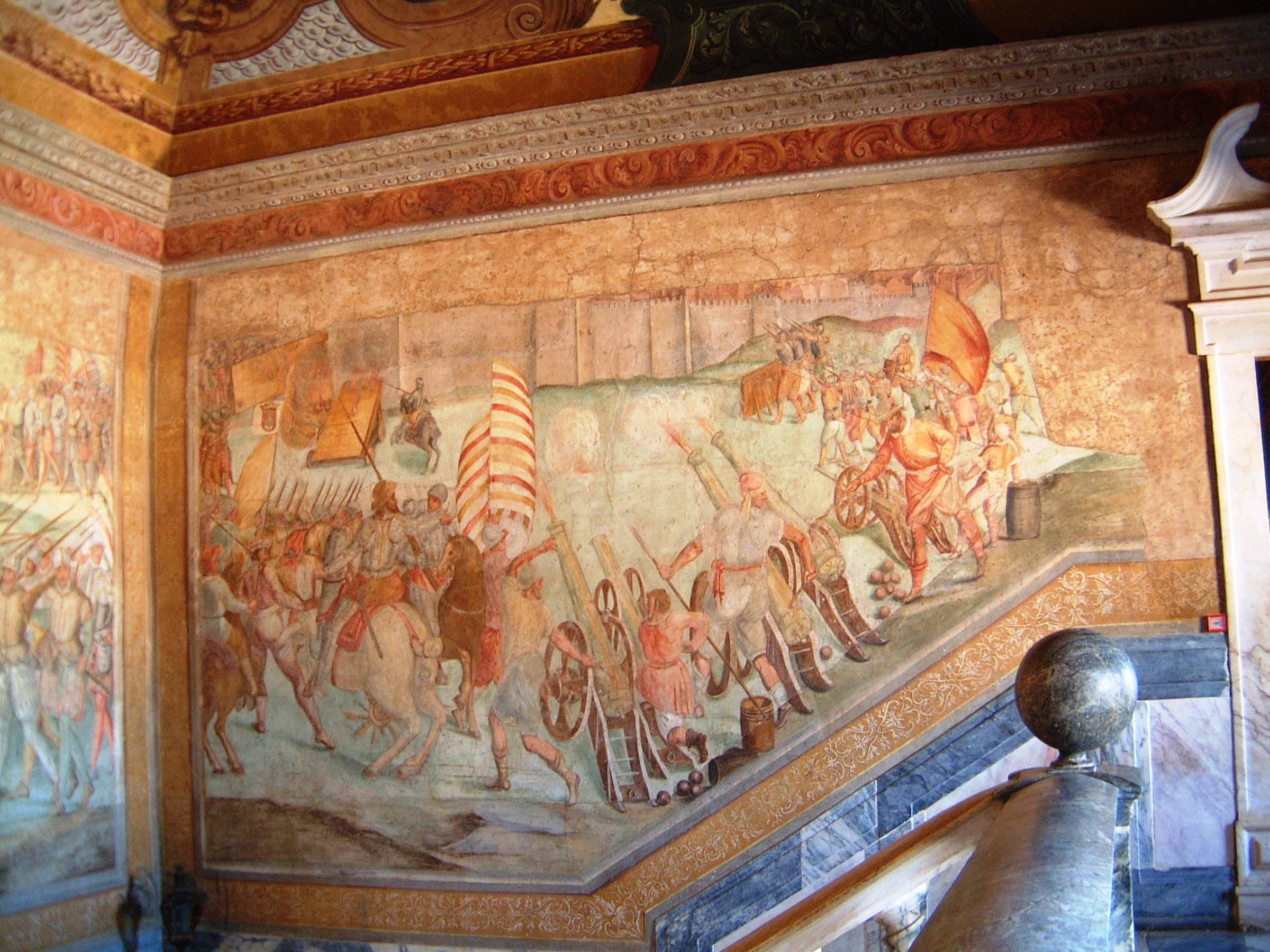With the House of Braganza having been restored to power by King Dom Manuel, its forth head, Dom Jaime (brother-in-law of the king and duke between 1498-1532) decided to built a new home in Vila Viçosa, whose construction started in 1501 at the same time as the one of the Ribeira Palace. The construction of the oldest part of the palace dates from this time. Continuing the policy of emulating the royal family, Dom Jaime strived to get his daughter Isabel married with Dom Duarte, son of King Dom Manuel and, therefore, brother of King Dom João III, a union that was achieved by the 5th duke, Dom Teodósio I (duke between 1532-63) in 1537. The second large construction phase was decided in this context, with part of the public façade of the palace, with classical features and facing the square, dating from this phase. Finally, a third construction phase, which extended (in a still debated level) this wing of the palace, was ordered by Dom Teodósio II (duke between 1583 and 1630). Today's appearance of the palace essentially results from these three construction phases.
In addition to being the home of Portugal's most important noble family (until it became royal), who had been the greater protagonist in the Crown's overseas possessions in multiple occasions, the Vila Viçosa Palace is also directly connected to the history of the Portuguese empire through the pictorial representation that decorates its main staircase, where the conquest of Azamor is represented.
The box of the new staircase, with a so-called imperial format (box inside the building with a central ramp, a landing and two symmetrical ramps) that is not very common in Portugal, announces the ambition of the piece, which is complemented by the frescoes. One of the successes of King Dom Manuel's Moroccan policy and one of the great identity-building moments of the Braganzas, the conquest of the North African city of Azamor in 1513 by an army led by the Duke Dom Jaime, is represented in the frescoes. The pictorial cycle is organised in three pieces, which correspond to the same number of timeframes: landing of the Portuguese troops at Azamor, preparation of the siege and siege of the city.
According to the testimony of the writing clerk of Cardinal Alexandrino's visit to the ducal palace (1572), the noble staircase already featured the wall decoration celebrating the military feats in which Duke Dom Jaime was the protagonist. Nonetheless, modern historiography has preferred to associate the construction of the imperial staircase that one finds there, including the respective pictorial representations, to the campaign led by Duke Dom Teodósio II. Nicolau de Frias was originally in charge of the architectural works, which were later continued by Pedro Vaz Pereira and Manuel Pereira Alvenéo. The cycle of frescoes was started in 1602 on the eve of Dom Teodósio's wedding with Dona Ana de Velasco y Girón. From the artists that worked in this decoration, we can highlight André Peres, ducal painter born in Almada in c. 1570, active at Vila Viçosa between 1594-1630 and author of the paintings mentioned here.
Bibliography:
TEIXEIRA, José, O Paço Ducal de Vila Viçosa. Sua Arquitectura e Suas Colecções, Lisboa, Fundação da Casa de Bragança, 1983. Monumentos, 6 (dossier dedicado ao Paço Ducal de Vila Viçosa), 1997. SERRÃO, Vitor, "O Parnaso pictórico. Mitologia, fábula e alegoria moral nas decorações a fresco no paço de Vila Viçosa (1550-1630)", Monumentos, 27, 2007, pp. 66-81.
Translated by: John Silva
Article sponsored by the Fundação Casa de Bragança.
